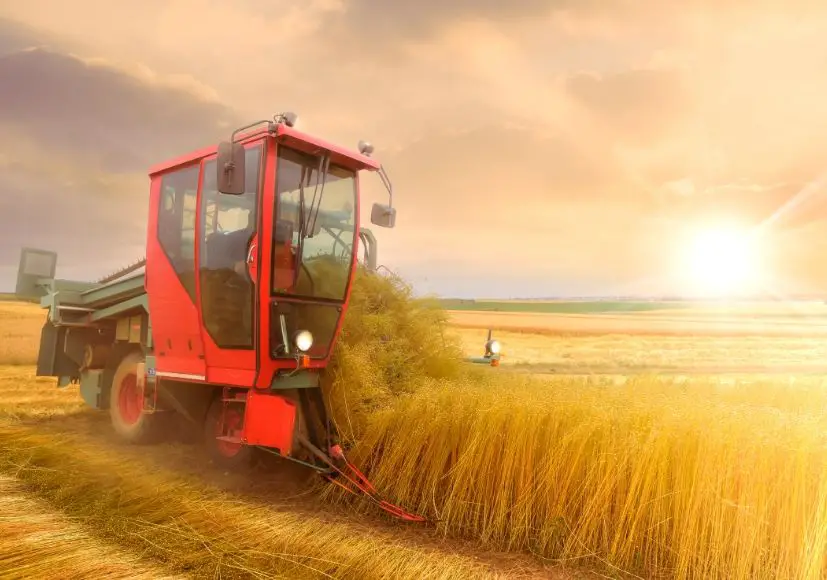Table of Contents
**This page contains affiliate links and I will be compensated if you make a purchase after clicking on my links**
Why is linen bedding so expensive?
Like most of you, my funds are limited, and so I’m on the hunt for the best value. I’m willing to spend more for certain items, but only if the extra cost can be justified.
In my younger, poorer days, 100% cotton was a big step up from cotton blends. Later, as staying cool became a priority, I upgraded to Lyocell, a healthy natural fabric derived from wood pulp.
But linen bedding is even more expensive than my favorite, Lyocell. Is it worth it?
You’ll need to decide for yourself. If you’re done with cotton and need a healthier, tougher, cooler fabric, then consider linen.
Basic economics tells us that expensive items are usually either in high demand or short supply. As most of us (including all hotels) are perfectly fine purchasing cotton sheets, high demand isn’t there. Limited supply perhaps?
As detailed below, most of the high cost is because linen takes more work to manufacture.
As a result, production is limited to a smaller group of manufacturers willing to take on the extra work for a low demand product. So yes, low supply also contributes to the high price.
Add to this a bit of marketing that raises the price on “exclusive” “luxury” items.
Where does linen come from?
Linen is made from fibers from the stalks of the flax plant (see the title picture above). Unlike cotton, flax is finicky to grow. It must be planted in the cooler part of the year and needs at least 100 days of growth before harvest.
After being harvested by machine, the tough outer stalk fibers must be separated from the usable inner fibers in a process called retting. Historically, the flax was first soaked in water for around a week. This would allow bacteria to naturally break down the pectin that binds the fibers together.
A variation of this, called dew-retting is used in Europe today. Harvested flax is laid out in fields and indigenous bacteria and fungi (microbes) break down the pectin over time. Some strains of microbes do a better job; therefore, some regions have a unique advantage over other regions.
In addition to the “right” microbes, flax harvesters need a perfect climate to encourage microbial growth and activity. It should be obvious that this process doesn’t work in cold or dry climates.
Retting is a finicky process. If not done long enough, fibers won’t separate during the next step, and yields will be low. If done too long, the fibers will be weakened. Either extreme results in poor quality.
Even among the best European flax harvesters, around a third of the harvest is lost to one thing or another.
Alternatively, retting can be accomplished with the additions of chemicals, such as alkali (e.g., NaOH) or oxalic acid. A process that took days can be reduced to a few hours.
However, there is an understandable environmental concern with the use of these chemicals. To be considered organic, retting without added chemicals must be used, which adds to the overall production time, and cost.
Research is ongoing to find enzymes, or engineered proteins, that break down pectin, naturally, like the microbes, but without the need for bacteria or fungi to be present. However, at present, these enzymes are not cost-effective for commercial use.

After retting, stalks are then broken up by machine, separating the good inner fibers from the outer fibers. The inner fibers are then combed into thin strands. These short strands are then spun into longer fibers that can be used to make linen cloth.
Flax may be grown and processed in one country, then spun and woven into linen products in a separate country.
No surprise, China is currently the largest producer of linen cloth. However, most of the linen manufactured by China uses flax imported from France or Belgium.
As the biggest producers of flax for linen, companies throughout Europe and the UK focus on the production of high-quality linen products.
An item that uses “French and Belgian flax” may or may not have been made in France or Belgium. “Belgium linen” should refer to a product that was both sourced and made in Belgium, assuming labeling conventions are followed.
Linen made in China (using flax from Europe) is less expensive than linen made entirely in Europe. Which is one reason the price of linen bedding varies so much.
In addition to the finicky stem fibers, seeds from flax are the source of linseed oil, found in many paints, cosmetics, and linoleum. (Indeed, colder places that can’t make flax for linen, focus on other flax uses. Evidently, Canada is the number one producer of linseed.)
Flax seeds are a great source of omega-3 fatty acids, and can be added to bread, salads, and mixed into smoothies.
Why is linen better than cotton?
In contrast to linen, cotton is grown in hotter places, like Egypt, Turkey, and the southern US. Cotton is far less expensive to grow and harvest. In terms of price, cotton is the clear winner.
Yes, cotton is soft and easy to care for. It “breathes” relative to say, sheets made of standard polyester. But is that enough?
Cotton is terrible at moisture control. Once wet, cotton holds that wetness close to your skin. This creates several issues
Wetness creates a humid microclimate under the covers. This is a breeding ground for any microbe (bacteria or fungi) plus dust mites
For your average person, especially one who launders their sheets on a regular basis, this is no big deal. However, for those with allergies or skin conditions, this can be an issue.
By holding moisture next to the skin, cotton prevents evaporative cooling
When we sweat, the moisture evaporates, taking our heat with it. This is an important mechanism for keeping us cool. The best cooling fabrics have moisture-wicking ability: as moisture is pulled away from the surface of our skin it takes the heat with it.
Unlike cotton, linen is excellent at wicking away moisture. Those who live in hot climates have long enjoyed wearing linen clothing, instead of cotton, for this reason.
Compared to cotton, linen is also free of lint.
Both cotton and linen can start off rough, but high-quality bedding of either fabric is usually pre-washed to soften the fabric. With continued washing, both become softer.
Indeed, linen may be first stone-washed, which involves washing in the presence of rough pumice stones. (Do not try this at home, unless you wish to damage your washing machine…)
Eventually, the cotton will start to fall apart—usually right at the time that it feels the softest. In contrast, linen will hold up significantly longer.
Cotton bedding comes in either a percale or sateen weave. Percale is a looser weave and thought to “breathe” more. Sateen is denser, but also has a shininess, like silk.
If you prefer your bedding “shiny”, then consider Lyocell or silk.

Why is linen better than Lyocell (or silk)?
Like linen, Lyocell is also a “woody” natural fiber. Lyocell is made from the wood pulp of sustainably grown trees, usually Eucalyptus, but sometimes bamboo.
Lyocell is sometimes sold under the tradename Tencel™ which refers to Lyocell made by the Austrian company, Lenzing.
Note that “bamboo” bedding may refer to viscose bamboo, made via a first-generation process that uses harsh chemicals to break down the wood pulp.
Tencel™, in contrast, is made using a third-generation environmentally friendly process. A “closed-loop” recycles 99% of the water and solvent.
Both linen and Lyocell are healthy, moisture-wicking fabrics that will keep you cool and dry. As is silk.
Silk is a fiber produced by the silkworm. Commonly, the Mulberry silkworm, named because they live off leaves of the Mulberry tree.
Lyocell has a silky and soft feel, part way between cotton and silk itself.
Lyocell is more expensive than cotton—more on par with high-end cotton bedding. But it is significantly less expensive than either linen or silk.
Like cotton and linen, Lyocell gets softer with use and washing. However, it’s expected to hold up better than cotton, especially as you don’t need to wash it as often. Linen will outlast all the fibers.
Compared to cotton—and especially linen—Lyocell is relatively resistant to wrinkles. (However, when it does wrinkle, because of its quick-drying, it’s very easy to remove those wrinkles. Simply spritz with a spray bottle of water and use your hands to smooth out the wrinkles. This trick also works well with silk.)
Linen, famously wrinkles. The water spritzing trick will eliminate some, but not all. If you must have “crisp” sheets, linen is probably not for you.
The biggest advantage of linen over Lyocell (or silk) is durability, especially when it comes to pet damage.
Cats love to “knead” things they like. This behavior is leftover from kittenhood when they would knead their mother’s belly to bring down the milk for nursing. My cats love to knead my silk-covered pillows and Lyocell comforters.
Many cat owners will keep their claws trimmed (NEVER declaw), however, none of my cats are amenable to a manicure. Their claws are long and very very sharp. (I have trained them not to hurt me. Most of the time.)
This kneading creates tiny holes and pulled threads. Smooth shiny fabric, including silk, Lyocell, and even sateen cotton, are most susceptible. (And yes, I could discourage this behavior, but they do enjoy it…)
Rougher fabrics, such as percale cotton and linen are not immune but are more resistant.

Cotton vs Lyocell vs Linen
[cell-phone users turn your phone for better viewing]
| cotton | Lyocell | linen | |
|---|---|---|---|
| Machine-washable (in scalding hot) | yes | yes | yes |
| Soft when new | varies | yes | varies |
| Softer with washing | yes | yes | yes |
| Free of lint | no | yes | yes |
| Free of wrinkles | varies | yes | no |
| Smooth and shiny | sateen | yes | no |
| Stay dry & cool when hot | no | yes | yes |
| Discourages growth of microbes & dust mites | no | yes | yes |
| (With proper care) lasts for years/decades | maybe | maybe | yes |
| (Somewhat) resistant to cat-claw damage | yes | no | yes |
| Price | $ | $$ | $$$ |
How to care for linen
These are the care instructions that came with my most recent linen sheet set.
Machine wash cold separately. Do not bleach. Tumble dry low. Remove promptly. Warm iron if necessary.
I have violated most of those instructions.
First, as an allergy sufferer, I wash everything in hot water (> 130 ºF or 55 ºC). High temperatures are needed to kill all the microbes and dust mites, plus all the allergens they generate. Plus, additional allergens, either shed from my cats or blown in from my open window.
Cotton, Lyocell, and even silk do fine in scalding hot water. As a more durable fabric, linen also endures perfectly fine.
As a fast-drying fabric, linen should not need high dryer temperatures. Removing promptly is good advice to avoid even more wrinkles…
Can you bleach linen?
I purposely purchase trendy “light grey” bedding. Due to the mineral deposits where I live all “whites” become grey in short order, despite oxygen bleach and similar whitening treatments.
According to FTC guidelines “Do not bleach” on the label indicates that all commercially available bleaches, when used on a regular basis, will harm the item.
Color-safe oxygen bleach is generally safe for most fabrics, including linen. However, “if used regularly” any chemical treatment will reduce the age of any fabric.
But what about traditional chlorine bleach?
Chlorine bleach will bleach dyes, so consider this type of bleach for “white” linen only. As a durable fabric, linen can be bleached, but just like with cotton, regular bleaching will wear out the fabric faster.
Aside from whitening, you may wish to use bleach in the laundry to hasten the softening of your linen bedding. This might be the case if your linen didn’t come pre-stone-washed and you find the feel too rough for your liking. But remember, softening equals wear equals a reduced life expectancy.
With (relatively) inexpensive cotton bedding, you can afford to abuse it with chlorine bleach. Treating your linen “investment” with bleach is a much riskier move.
As always, follow the instructions on your bottle of bleach. Consider starting with a bleach concentration much lower than recommended. You may even wish to try it on something smaller first, like a pillowcase.
If you use bleach rarely, over time it will degrade to a solution of salt (NaCl) and water. Keep this in mind if switching to a fresh bottle. Your old “formula” may be far too harsh for fresh bleach.
There is a fine line between softening the fabric and significantly reducing its lifespan. As such, keep “regular” bleaching to a minimum.
(This suggests future experimentation on my part. Stay tuned…)
Who should NOT buy linen?
Linen isn’t for everyone.
| Who should NOT buy linen? |
|---|
| – Sleep perfectly fine on cotton or cotton blends – No allergies or skin conditions – Enjoy Lyocell, bamboo, or silk bedding and have no pets in the bedroom – Don’t want to keep your bedding forever; like to purchase new bedding regularly – Must have unwrinkled sheets (without ironing) – Don’t like the “rough” look or feel – Enjoy lint – Don’t wish to (or can’t) spend $$$ on bedding |
Otherwise, if you have the $$$, considering investing in premium bedding made of linen fabric.
Enjoy!

Top photo: Woman in a field of flax © Alexpunker via Canva.com
Want to learn more about the products mentioned?
[If you experience issues with menus or links not working, it is most likely due to your Ad blocker.]



